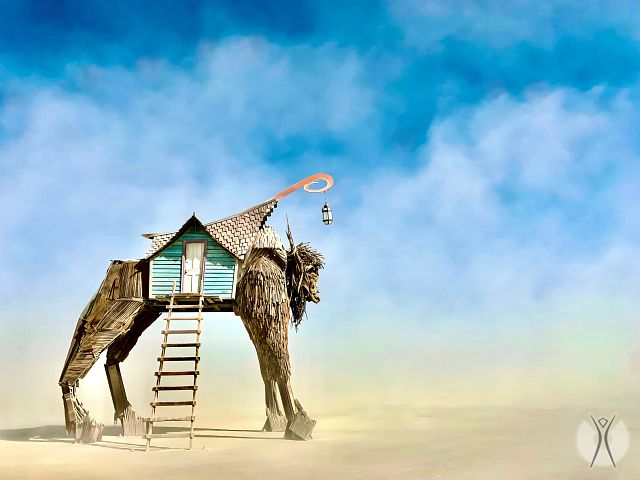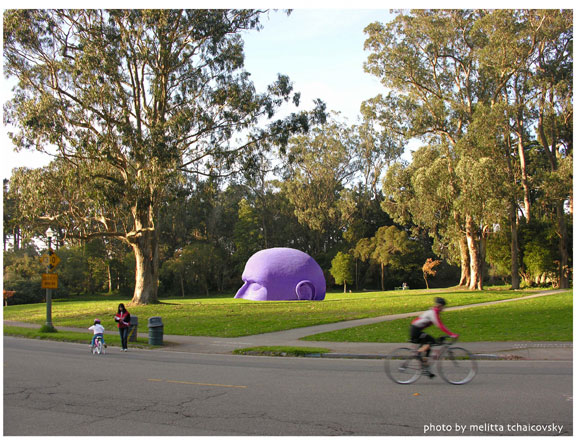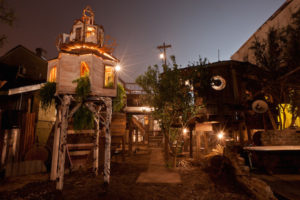Since the 1997 release of “Burning Man” by John Plunkett and Brad Wieners, dozens of titles have been published about the event and the culture; there are now 40 books about Burning Man, and 160 with chapters or sections about it. There is also a rich body of academic writing about Burning Man.
If you working on a book that has, or is hoping to use, Burning Man content (i.e. images from the Burning Event in Black Rock City, the words “Burning Man” or “Black Rock City” on the front or rear covers, specific descriptions of BRC art pieces, or other intellectual property), you must start by filling out this form. Members of Burning Man Project’s Communications team will review your proposal and reach out to you with more info.
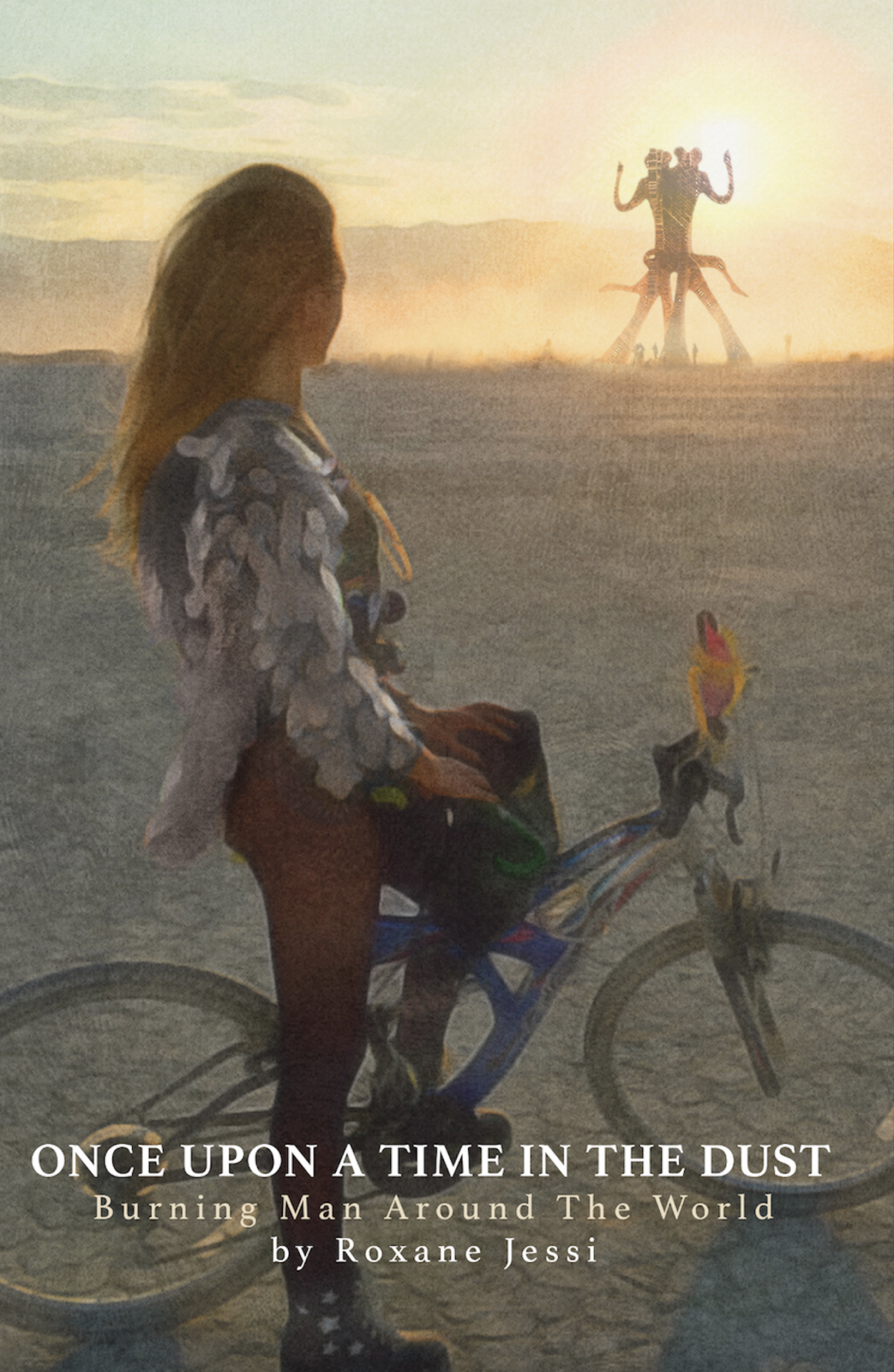 ONCE UPON A TIME IN THE DUST: BURNING MAN AROUND THE WORLD by Roxane Jessi
ONCE UPON A TIME IN THE DUST: BURNING MAN AROUND THE WORLD by Roxane Jessi
Burning Man Project, 2023, ISBN 9781734965902
Once Upon a Time in the Dust: Burning Man Around the World chronicles Roxane Jessi’s journey to six continents — from Afrikaburn (South Africa), to Black Rock City (Nevada, USA), from Blazing Swan (Australia) to Burning Japan (Japan), Fuego Austral (Argentina), Midburn (Israel) and Nowhere (Spain).
Through storytelling — which is central to Burning Man culture and knowledge sharing — Roxane shares her adventures and impressions of each wildly unique event, and introduces you to the Burners who live, love, imagine and create global Burning Man culture.
 TURN YOUR LIFE INTO ART: Lessons in Psychomagic from the San Francisco Underground by Caveat Magister (Benjamin Wachs)
TURN YOUR LIFE INTO ART: Lessons in Psychomagic from the San Francisco Underground by Caveat Magister (Benjamin Wachs)
Burning Man Project, 2021, ISBN 9781734965926
Until now, very little has been written about San Francisco’s underground art scene and the magical, impossible, life-changing experiences it inspired. In Caveat Magister’s latest book, you’ll discover what “psychomagical” experiences are, and why they can have such a powerful transformative effect; why rag-tag groups of weirdo artists have been so good at peak experience design, and why wealthy corporations filled with equally talented people have done so poorly; where “magical art” connects with the work of Jung and the Humanistic psychologists to support personal development and mental health; how to create experiences that go beyond design and seem impossible – until you experience them yourself.
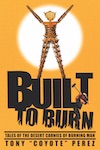 BUILT TO BURN: Tales of the Desert Carnies of Burning Man by Tony “Coyote” Perez
BUILT TO BURN: Tales of the Desert Carnies of Burning Man by Tony “Coyote” Perez
Burning Man Project, 2020, ISBN 9781734965902
An essential Burning Man origin story, BUILT TO BURN chronicles the wild uncertainty and creative chaos of the early days in the Black Rock Desert, when the event’s future was under constant threat and the organizers were making everything up as they went along. It’s a tale of struggle and survival, of friends made and friends lost, as Coyote and his misfit crew battle raging storms, crazed livestock, angry townsfolk and each other, locking horns with the real-life cowboys, Indians, outlaws and outcasts of Nevada’s high desert frontier.

MUTANT VEHICLES — Art on Wheels at Burning Man by Alexandra Lier
Speedseekers Productions, 2021, ISBN 9783000685576
One of the most amazing aspects of the Burning Man event is the Mutant Vehicles. A Mutant Vehicle is something wholly different than the cars you can find on any street in the world. All of them, by design, are unique creations…spawned from the imagination and workmanship of their creators. And Burning Man is the one place where more Mutant Vehicles congregate than anywhere else.
Artist, photographer, author and director Alexandra Lier picks up with her third title, Mutant Vehicles. In addition to her beautiful photographs, her passion for driving art and her skill as a interdisciplinary creative lends much depth to this book.This book is your ticket to a vicarious trek with the Mutants through stunning photography, film, sound, and augmented reality. Hop on and take a seat for a surreal ride across the Black Rock Desert.
Foreword by David Best; Futureword by Patrice Mackey (aka Chef Juke), Burning Man Project Department of Mutant Vehicle
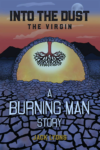 INTO THE DUST: THE VIRGIN — A BURNING MAN STORY by Jack Lyons
INTO THE DUST: THE VIRGIN — A BURNING MAN STORY by Jack Lyons
Self-published, 2021, now available in paperback, eBook, and audiobook formats
Burning Man is just a hedonistic music festival, a decadent party for burnouts, druggies, and hippies. Or so Diane believes, until an unexpected invitation from her closest friend opens a door to unknown possibilities. Leaving her carefully ordered life behind, Diane accepts her friend’s invitation and immerses herself in the harsh, unfamiliar environment of Burning Man.
INTO THE DUST explores the question WHAT IS BURNING MAN? Why are people drawn to Burning Man, and what brings them back again and again? What actually happens at the maligned, misunderstood, iconic event staged in the middle of a Nevada desert? More importantly, what happens to the people who go?
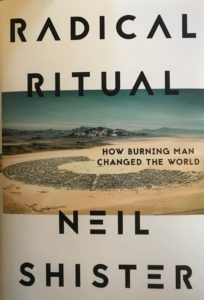
Radical Ritual; How Burning Man Changed the World by Neil Shister
Counterpoint, 2019, ISBN 9781640092198
Author Neil Shister is a journalist and historian, but he’s also a Burner. He treads the line between participant and storyteller as he digs through the forces that have shaped the event, from self-governance to Google. The book focuses largely on the life of founder Larry Harvey, but it also looks at how the event has changed over time and how it’s gone from an outsider ritual to a heavily used symbol of the technocracy.

The Scene That Became Cities: What Burning Man Can Teach Us About Building Better Communities by Caveat Magister (Benjamin Wachs)
North Atlantic Books, 2019, ISBN 97816231736
A practical and irreverent guide to Burning Man, its philosophy, why people do this to themselves, and how it matters to the world. Burning Man is a prototype, and its philosophy is a how-to manual for better communities, that, instead of rules, offers principles. Featuring iconic and impossible stories from “the playa,” interviews with Burning Man’s founders and staff, and personal recollections of the late Larry Harvey–Burning Man’s founder, “Chief Philosophical Officer,” and the author’s close friend and colleague–The Scene That Became Cities introduces readers to the experience of Burning Man; explains why it grew; posits how it could impact fields as diverse as art, economics, and politics; and makes the ideas behind it accessible, actionable, and useful.
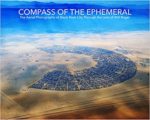 Compass of the Ephemeral: Aerial Photography of Black Rock City through the Lens of Will Roger
Compass of the Ephemeral: Aerial Photography of Black Rock City through the Lens of Will Roger
Smallworks Press, 2019, ISBN 13.978-0-9778806-5-2
Nevada artist and Burning Man event co-founder Will Roger photographed the ever changing cityscape and transformation of Black Rock City as it changed throughout the years. The book contains a substantial collection of aerial photos as never seen before. A photographic collaboration between Will Roger and Burning Man architect Rod Garrett, Introduction by Burning Man co-founder Harley Dubois. Contributions from Independent scholar William Fox, Tony Perez and Archaeologist Alexei Vranich.
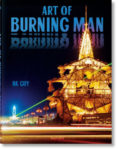
Art of Burning Man – Second Edition by NK Guy
Taschen, 2018, ISBN 3836550075
In this updated edition with fresh images, writer and photographer NK Guy presents 16 years of Burning Man art. His dazzling images record these participatory, collective, intrinsically ephemeral installations and happenings in the desert, which exist for no clearer purpose than because someone wanted to express something. The result is testimony to a realm far beyond the ego, commerce, and power play of mainstream cultural output. With a foreword by temple designer and artist David Best and a futureword by Marian Goodell.

Playa Fire: Spirit and Soul at Burning Man by Stewart Harvey
Harper Collins, 2017, ISBN 978-0-06-256406-1
This photographic pilgrimage captures the creative power of Burning Man past, present and future; through the lens of award-winning photographer Stewart Harvey, Playa Fire features over 250 breathtaking photographs, many never seen before, and a privileged inside look at the creation and evolution of this historic festival. Drawn from his personal archives of over thirty years of Burning Man, Stewart’s panoramic photographs are accompanied by intimate stories, as well as family photos of the young Harvey brothers and their band of merrymakers. Foreward by Larry Harvey.

Dusty Playground by Zippy Lomax
Spring 2017, ISBN 978-0-9985794-0-5
“With images suffused with imagination and wonder, Zippy Lomax offers us a rare and intimate view of Burning Man, one seen through the prism of the event’s youngest participants – the children who come with their families to climb art installations, dress up with glitter and fancy goggles, ride around on motorized zebra unicorns, and build castles in the dust.” – Scott London

Burners by Nicholas King
Laughing Coyote Press, 2017 ISBN 978-0-9842999-9-7
Nicholas King’s sepia-toned black and white portraits reveal not only the diversity of the participants he photographs, but the diversity of human response to unconditional acceptance. He says,” I am honored by their trust in me.”
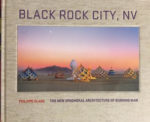 Black Rock City, NV: The Ephemeral Architecture of Burning Man by Philippe Glade
Black Rock City, NV: The Ephemeral Architecture of Burning Man by Philippe Glade
Real Paper Books, 2016 ISBN 978-0-9837428-1-4
Five years in the making, Black Rock City, NV: The New Ephemeral Architecture of Burning Man is the sequel of a sold-out and sought-after volume 1, published by Real Paper Books in 2011. This entirely new survey presents 200 images from recent years where vernacular and perennial solutions coexist along experimental and rule-breaking designs, with foreword by Zahid Sardar and essays by Burning Man co-founder Harley K. Dubois, Fred Bernstein architecture critic and AIASF architect Glenn Lym.
 Waking Dream by William Binzen
Waking Dream by William Binzen
Smith Andersen North Gallery catalog, 2016
This collection of photographs by William Binzen offers a rare slice of history when the site-specific works of Binzen’s collaborative and ritual-based Desert Siteworks (1992-94) helped transform the Burning Man event from its first weekend outing on the playa in 1990, into the widely acclaimed, week-long art event it later became.
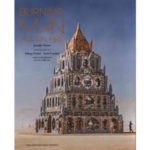 Art on Fire Second Edition by Jennifer Raiser
Art on Fire Second Edition by Jennifer Raiser
RacePoint Publishing, 2016 ISBN: 978-1631062568
Burning Man: Art on Fire is an authorized collection of some of the most stunning examples of Burning Man art, now updated to include the most recent installations, through 2015. Get lost in a rich gallery of images showcasing the best examples of playa art with over 200 photos by Sidney Erthal and Scott London, an introduction from Burning Man founder Larry Harvey, and a foreword by Will Chase.
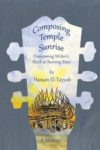
Composing Temple Sunrise: Overcoming Writer’s Block at Burning Man by Hassan El-Tayyab
Poetic Matrix Press, 2016 ISBN 13: 9780986060069)
This is a memoir by musician Hassan El-Tayyab, who recounts his trip across the US looking for that elusive muse. He arrives in Berkeley and hooks up with a group creating a metal sculpture called Fishbug. They go to Burning Man in the Nevada dessert and here he writes the musical piece Temple Sunrise.
 Burning Man – The World’s Biggest Playground by Peter Armenia
Burning Man – The World’s Biggest Playground by Peter Armenia
Worldview Publishing, 2015 ISBN 978-0-692-49808-8
A New York photographer presents the Burning Man experience to children via colorful photographs and simple explanatory captions; interesting to adults as well.
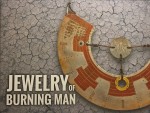
Jewelry of Burning Man by Karen Christians, Christine Kristen (LadyBee) and George Post
Global Interprint, Inc., 2015 ISBN 978-0-9855284-1-6
This comprehensive book includes LadyBee’s 20+year collection of playa jewelry, the story of Oasis 47, a jewelry-making workshop and camp, and the stories of 52 makers who create and gift jewelry on the playa, with photos of the makers and their work. In addition to presenting the history of playa jewelry, this book illuminates the heart of the Gift Economy.

Art of Burning Man by NK Guy
Taschen, 2015. ISBN 978-3-8365-5007-9
NKGuy, writer and photographer, presents 16 years of art on the playa, from 1998 through 2014, in this oversize book. In addition to his beautiful photographs, his breadth of on-site experience, and his skill as a writer lends much depth to this book. Introduction by David Best; futureword by Marian Goodell.
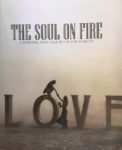
The Soul on Fire by Victor Habachy
Imprimersonlivre.com, Paris 2015
“This year, I was one of those lucky people to attend Burning Man. Words can’t really describe this experience which was quite affecting me, as is the case for most of its participants. Instead, I will let my photographs speak for themselves. I hope, through these pages, that you will be joining me on this journey and that you will be leaving this book with a taste of love and freedom.” -Victor Habachy
 Playa Dust – Collected Stories from Burning Man, edited by Samantha Krukowski
Playa Dust – Collected Stories from Burning Man, edited by Samantha Krukowski
Black Dog Publishing, UK 2014 ISBN 978-1-908966-64-3
This compilation of essays by authors who are part of the universe of Burning Man engages the many ideas and landscapes on its periphery, revealing the complex nature and range of this annual pilgrimage to the Black Rock Desert.
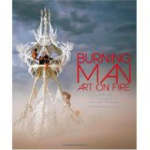 Burning Man: Art on Fire, by Jennifer Raiser
Burning Man: Art on Fire, by Jennifer Raiser
Race Point Publishing, 2014 ISBN 978-1937994372.
Well-curated survey of Burning Man art with beautiful photography by Sidney Erthal and Scott London, with an introduction by Larry Harvey.

Cargo Cult by Karen Kuehn
Rogue Publishing, 2014
Photographer Karen Kuehn went to Burning Man in 2013 and photographed burners all over Black Rock City, asking them the question, “What concept would you bring to a new world to better humanity?” Her color photographs and quotes from her subjects beautifully capture the art, people, and community spirit of Burning Man.
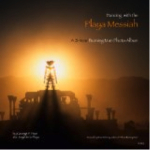 Dancing with the Playa Messiah: A 21-Year Burning Man Photo Album, by George P. Post
Dancing with the Playa Messiah: A 21-Year Burning Man Photo Album, by George P. Post
Dragon Fotografix, 2012 ISBN 978-0985528409
A unique historical chronicle, featuring nearly 1,000 of George’s photographs from 1991-2011.
Available in our Marketplace.
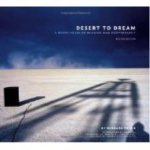 Desert to Dream: A Dozen Years of Burning Man Photography, by Barbara Traub
Desert to Dream: A Dozen Years of Burning Man Photography, by Barbara Traub
Immedium, 2011 ISBN 978-1597020268.
Barb’s photos from 1994-2003, with an introduction by Les Blank and an epilogue by Lawrence Ferlinghetti.
Available in our Marketplace.
 Black Rock City, NV: The Ephemeral Architecture of Burning Man, by Phillipe Glade
Black Rock City, NV: The Ephemeral Architecture of Burning Man, by Phillipe Glade
Real Paper Books, 2011 ISBN 978-0983742807.
A compendium of the various innovative architectural styles of Black Rock City through the years.
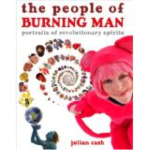 The People of Burning Man, by Julian Cash and Jackie Cash
The People of Burning Man, by Julian Cash and Jackie Cash
Self-published, 2011 ISBN: 978-0615469546
A decade of Julian’s playful, inventive portraits taken in a white tent on the playa.
 The Tribes of Burning Man: How an Experimental City in the Desert Is Shaping the New American Counterculture, by Steven T. Jones
The Tribes of Burning Man: How an Experimental City in the Desert Is Shaping the New American Counterculture, by Steven T. Jones
Consciousness, 2011 ISBN 978-1888729290.
The author’s journey through Burning Man’s culture from 2004 through 2011.
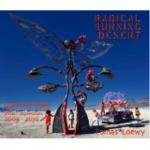 Radical Burning Desert – Seven Years of Burning Man Photography 2004-2010, by Tomas Loewy and Peter Ruprecht
Radical Burning Desert – Seven Years of Burning Man Photography 2004-2010, by Tomas Loewy and Peter Ruprecht
Cool.pool.books, 2011 ISBN 978-0982792766.
Over 200 pages of photos spanning seven years in the desert.
 Theater in a Crowded Fire: Ritual and Spirituality at Burning Man, by Lee Gilmore
Theater in a Crowded Fire: Ritual and Spirituality at Burning Man, by Lee Gilmore
University of California Press, 2010 ISBN 978-0520260887.
“A model of academic writing – intelligent, concise and readable.” (Reno News and Review)
 On the Edge of Utopia, by Rachel Bowditch
On the Edge of Utopia, by Rachel Bowditch
Seagull Books, 2010 ISBN 978-190649725.
A study of burning Man’s new types of performance, installation art, community and invented rituals that bridge ancient traditions to the 21st century.
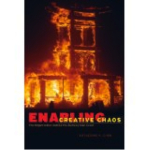 Enabling Creative Chaos: The Organization Behind the Burning Man Event, by Katherine K. Chen
Enabling Creative Chaos: The Organization Behind the Burning Man Event, by Katherine K. Chen
University of Chicago Press, 2009 ISBN 978-0226102382.
“Chen has succeeded in writing an engaging ethnography of Burning Man and skillfully developed its implications for organizational theory and managerial practice.”(Rakesh Khurana, Harvard Business School)
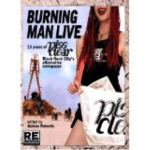 Burning Man Live: 13 Years of Piss Clear, Black Rock City’s Alternative Newspaper, by Adrian Roberts
Burning Man Live: 13 Years of Piss Clear, Black Rock City’s Alternative Newspaper, by Adrian Roberts
RE/Search Publications, 2009 ISBN 78-1889307183.
All 34 issues of Piss Clear, BRC’s alternative newspaper, from 1995 to 2007, with an essay by Malderor and introduction by Brian Doherty.
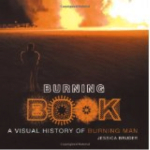 Burning Book: A Visual History of Burning Man, by Jessica Bruder
Burning Book: A Visual History of Burning Man, by Jessica Bruder
Gallery Books, 2007 ISBN 978-1416928249.
“This is pretty much like the best Burning Man scrapbook, ever…” (Piss Clear)
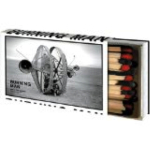 Burning Man: Art in the Desert, by A. Leo Nash and Daniel Pinchbeck
Burning Man: Art in the Desert, by A. Leo Nash and Daniel Pinchbeck
Harry N. Abrams, 2007 ISBN 978-0810992900.
Black and white photographs and text by Leo Nash, introduction by Daniel Pinchbeck. ”A loving tribute to the art of Burning Man.”
 Inspired Madness: The Gifts of Burning Man, by Dale Pendell
Inspired Madness: The Gifts of Burning Man, by Dale Pendell
Frog Books, 2006 ISBN 978-1583941720.
“In part a nonfiction discussion of the Burning Man festival, in part a poetic romp through Nevada’s Black Rock desert.”
 This Is Burning Man: The Rise of a New American Underground, by Brian Doherty
This Is Burning Man: The Rise of a New American Underground, by Brian Doherty
Benbella Books, 2006 ISBN 978-1932100860.
“Doherty captures the extraordinary spirit of the festival – its whimsy, its danger, its strangeness, its absurdity – as well as the outrageous genius of its artists and players.”
 AfterBurn: Reflections on Burning Man, by Lee Gilmore and Mark Van Proyen
AfterBurn: Reflections on Burning Man, by Lee Gilmore and Mark Van Proyen
University of New Mexico Press, 2005 ISBN 978-0826333995.
Essays by the editors and Erik Davis, Robert V. Kozinets and John F. Sherry, Jr., Katherine Chen, JoAnne Northrup, Jeremy Hockett, Allegra Fortunati and Sarah M. Pike.
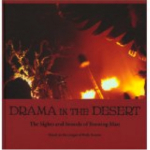 Drama in the Desert: The Sights and Sounds of Burning Man, by Holly Kreuter
Drama in the Desert: The Sights and Sounds of Burning Man, by Holly Kreuter
Raised Barn Press, 2002 ISBN 978-0972178907.
Holly’s photographs, with essays and poems by Dave Eggers, Larry Harvey, Daniel Terdiman, Rob Brezny, Mark Van Proyen, and others. CD of photos included.
Available in our Marketplace.
 Burning Man, by John Plunkett and Brad Wieners
Burning Man, by John Plunkett and Brad Wieners
Hardwired, 1997 ISBN 978-1888869132.
The first book about Burning Man, with essays by Janelle Brown, Erik Davis, Larry Harvey, Kevin Kelly and Bruce Sterling; images by Barbara Traub, Stewart Harvey, Geoffrey Clifford, Gerry Gropp, Kevin Kelly and others.
Some of the many books that include Burning Man:
 THE IMMEASURABLE WORLD – Journeys in Desert Places by William Atkins
THE IMMEASURABLE WORLD – Journeys in Desert Places by William Atkins
Doubleday New York, 2018. ISBN: 9780385539883
In the classic literary tradition of Bruce Chatwin and Geoff Dyer, a rich and exquisitely written account of travels in eight deserts on four continents that evokes the timeless allure of these remote and forbidding places. Chapter 6, “Matter Out of Place – The Black Rock Desert, USA” covers the author’s visit to Burning Man in 2015, and also includes much interesting history of the Black Rock Desert.
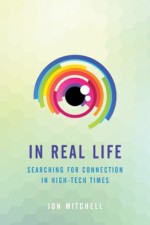 In Real Life: Searching for Connection in High-Tech Times by Jon Mitchell
In Real Life: Searching for Connection in High-Tech Times by Jon Mitchell
Parallax Press, 2015. ISBN: 978-1-937006-90-7
Written by Burning Man’s publisher, chapter 6, “How to Disconnect” includes an in-depth essay about the author’s experience of the intersecting worlds of Burning Man and the technology industry and a discourse on the principle of Immediacy.
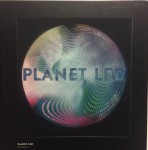 PLANET LED by Teddy Lo
PLANET LED by Teddy Lo
ORO Editions, 2014. ISBN 978-1-935935-51-3
Chapter 6: ART includes a section on Burning Man by Louis Brill and Christine Kristen (LadyBee) featuring the authors’ essay on light art at the event, including the work of Jared Gallardo, Mark Lottor, Tim Black, Scott Gasparian, Jeremy Lutes, Chris Schardt, Michael Light and David Rattray. Also featured in Chapter 6 are Leo Villareal and Anakin Koenig.

From Bitcoin to Burning Man and Beyond: The Quest for Identity and Autonomy in a Digital Society, edited by John Clippinger and David Bollier
ID3, 2014. ASIN B00M7BMT04. Features a thoughtful essay about Burning Man by Peter Hirshberg
 The Days of Anna Madrigal by Armistead Maupin
The Days of Anna Madrigal by Armistead Maupin
Harper Collins, 2014 ISBN 978-0-06-219624-8 Anna and her family go to Burning Man 2012.
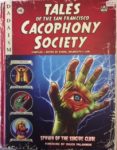
Tales of the San Francisco Cacophony Society by Carrie Galbraith and John Law, edited by Kevin Evans
Last Gasp, 2013 ISBN 10:0-86719-774-9
Tales Of The San Francisco Cacophony Society is a retelling in period images and words of the history of the most influential underground cabal that you have never heard of. Rising from the ashes of the mysterious and legendary Suicide Club, The Cacophony Society, at its zenith, hosted chapters in over a dozen major cities, and influenced much of what was once called the underground. Flash Mobs, Urban Exploration, and Culture Jamming are a few of the pop culture trends that Cacophony helped kick off. Chuck Palahniuk’s Fight Club, Burning Man and Internet social networking powerhouse Laughing Squid were informed and inspired by Cacophony. Burning Man actually began as a Cacophony event, the Zone Trip in 1990.
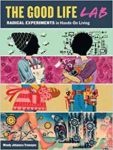
The Good Life Lab by Wendy Jehanara Tremayne
Storey Publishing, 2013, ISBN 978-1-61212-101-7
Tired of the high-pressure life they lead in New York City, Wendy Jehanara Tremayne and her husband Mikey Sklar migrate to Truth or Consequences, New Mexico, where they build, invent, forage, and grow all they need for themselves. Wendy was a Burning Man volunteer and writes about how her experiences in Black Rock City motivated her to be self-sufficient and to live off the grid; there are references to Burning Man throughout the book.
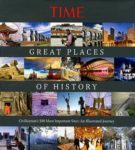 Time – Great Places Of History: Civilization’s 100 Most Important Sites, an Illustrated Journey
Time – Great Places Of History: Civilization’s 100 Most Important Sites, an Illustrated Journey
Time, 2011. # 100. ISBN-13: 978-1603201964
Burning Man: Photo of Big Rig Jig, photo of Crude Awakening figures and short text.
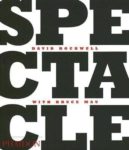 Spectacle, by David Rockwell with Bruce Mau
Spectacle, by David Rockwell with Bruce Mau
Phaidon, 2006. ISBN-13: 978-0714845746.
12 page chapter on Burning Man, with 8 photos, essays by the author and an interview with Larry Harvey.
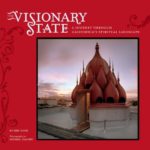 The Visionary State – A Journey through California’s Spiritual Landscape, by Erik Davis, with photographs by Michael Rauner
The Visionary State – A Journey through California’s Spiritual Landscape, by Erik Davis, with photographs by Michael Rauner
Chronicle Books, 2006. ISBN-13: 978-0811848350
6 page chapter, Temple Burn, on David Best’s temples and their spiritual significance at the event.
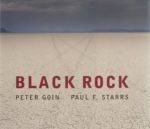 Black Rock, By Peter Goin and Paul F. Starrs
Black Rock, By Peter Goin and Paul F. Starrs
University of Nevada Press, 2005. ISBN-13: 978-0874175912
A chapter on Burning Man and several photos throughout the book.
 Time, Space and the Market: Retroscapes Rising, by Steven Brown and John F. Sherry
Time, Space and the Market: Retroscapes Rising, by Steven Brown and John F. Sherry
ME Sharpe Inc., 2003. ISBN 978-0765610133.
Chapter 2: Bespectacled and Bespoken by John F. Sherry Jr.; Chapter 11: The Moment of Infinite Fire by Robert V. Kozinets
 Yoga for People Who Can’t Be Bothered To Do It, by Geoff Dyer
Yoga for People Who Can’t Be Bothered To Do It, by Geoff Dyer
Vintage Books, 2003. ASIN: B008AURBUO.
A witty travel book, including a chapter, The Zone, on Geoff’s trip to Burning Man in 1999.
 Breaking Open the Head: A Psychedelic Journey into the Heart of Contemporary Shamanism, by Daniel Pinchbeck
Breaking Open the Head: A Psychedelic Journey into the Heart of Contemporary Shamanism, by Daniel Pinchbeck
Broadway Books, August 2002. ISBN 0767907426.
Chapter 12: a Cybernetic Pulse Engine and chapter 13: Dr. Megavolt, take place at Burning Man 2000 and 2001.


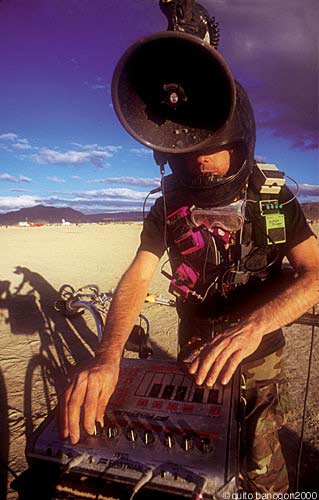







 Compass of the Ephemeral: Aerial Photography of Black Rock City through the Lens of Will Roger
Compass of the Ephemeral: Aerial Photography of Black Rock City through the Lens of Will Roger



 Black Rock City, NV: The Ephemeral Architecture of Burning Man by Philippe Glade
Black Rock City, NV: The Ephemeral Architecture of Burning Man by Philippe Glade Waking Dream by William Binzen
Waking Dream by William Binzen

 Burning Man – The World’s Biggest Playground by Peter Armenia
Burning Man – The World’s Biggest Playground by Peter Armenia


 Playa Dust – Collected Stories from Burning Man, edited by Samantha Krukowski
Playa Dust – Collected Stories from Burning Man, edited by Samantha Krukowski



 Black Rock City, NV: The Ephemeral Architecture of Burning Man, by Phillipe Glade
Black Rock City, NV: The Ephemeral Architecture of Burning Man, by Phillipe Glade









 This Is Burning Man: The Rise of a New American Underground, by Brian Doherty
This Is Burning Man: The Rise of a New American Underground, by Brian Doherty AfterBurn: Reflections on Burning Man, by Lee Gilmore and Mark Van Proyen
AfterBurn: Reflections on Burning Man, by Lee Gilmore and Mark Van Proyen Drama in the Desert: The Sights and Sounds of Burning Man, by Holly Kreuter
Drama in the Desert: The Sights and Sounds of Burning Man, by Holly Kreuter Burning Man, by John Plunkett and Brad Wieners
Burning Man, by John Plunkett and Brad Wieners THE IMMEASURABLE WORLD – Journeys in Desert Places by William Atkins
THE IMMEASURABLE WORLD – Journeys in Desert Places by William Atkins In Real Life: Searching for Connection in High-Tech Times by Jon Mitchell
In Real Life: Searching for Connection in High-Tech Times by Jon Mitchell PLANET LED by Teddy Lo
PLANET LED by Teddy Lo
 The Days of Anna Madrigal by Armistead Maupin
The Days of Anna Madrigal by Armistead Maupin

 Time – Great Places Of History: Civilization’s 100 Most Important Sites, an Illustrated Journey
Time – Great Places Of History: Civilization’s 100 Most Important Sites, an Illustrated Journey Spectacle, by David Rockwell with Bruce Mau
Spectacle, by David Rockwell with Bruce Mau The Visionary State – A Journey through California’s Spiritual Landscape, by Erik Davis, with photographs by Michael Rauner
The Visionary State – A Journey through California’s Spiritual Landscape, by Erik Davis, with photographs by Michael Rauner Black Rock, By Peter Goin and Paul F. Starrs
Black Rock, By Peter Goin and Paul F. Starrs Time, Space and the Market: Retroscapes Rising, by Steven Brown and John F. Sherry
Time, Space and the Market: Retroscapes Rising, by Steven Brown and John F. Sherry Yoga for People Who Can’t Be Bothered To Do It, by Geoff Dyer
Yoga for People Who Can’t Be Bothered To Do It, by Geoff Dyer Breaking Open the Head: A Psychedelic Journey into the Heart of Contemporary Shamanism, by Daniel Pinchbeck
Breaking Open the Head: A Psychedelic Journey into the Heart of Contemporary Shamanism, by Daniel Pinchbeck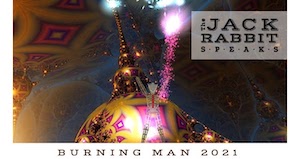
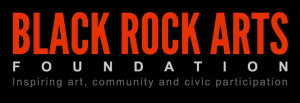 The Black Rock Arts Foundation (BRAF) was founded by several of the partners who founded and produce Burning Man, with the mission to support and promote community, interactive art and civic participation.
The Black Rock Arts Foundation (BRAF) was founded by several of the partners who founded and produce Burning Man, with the mission to support and promote community, interactive art and civic participation.